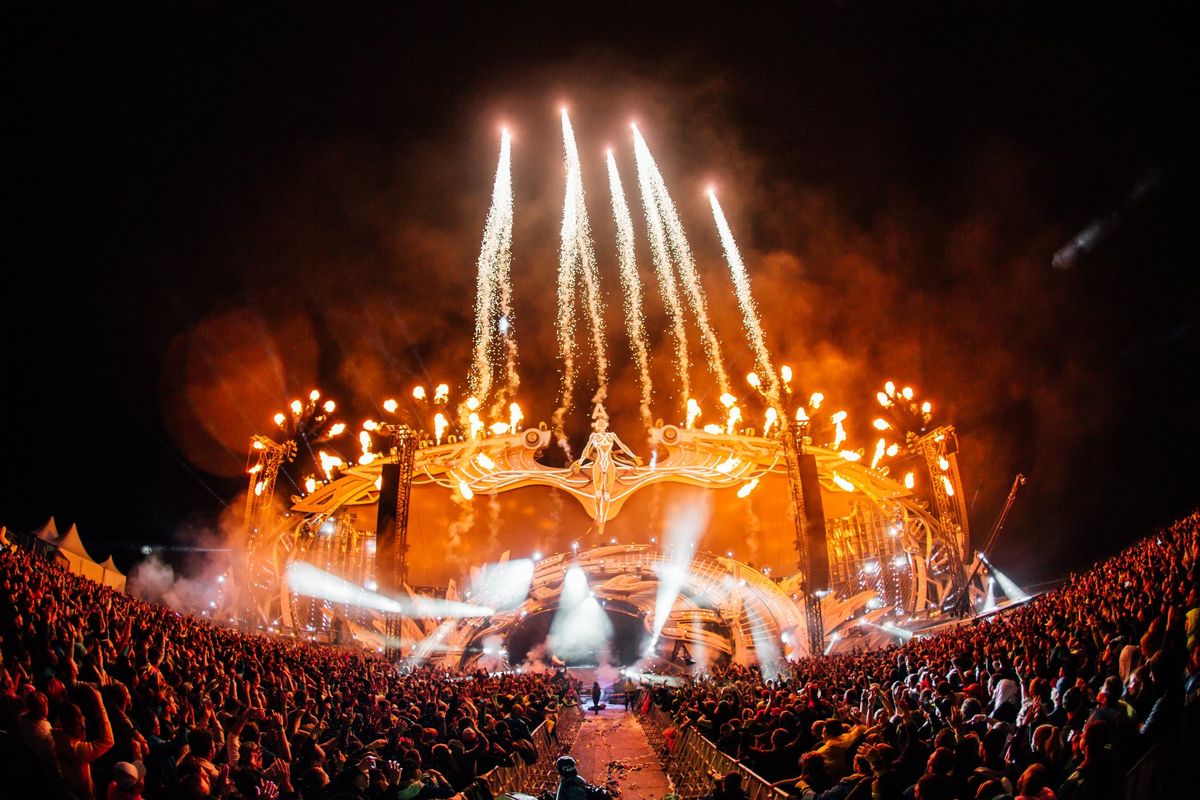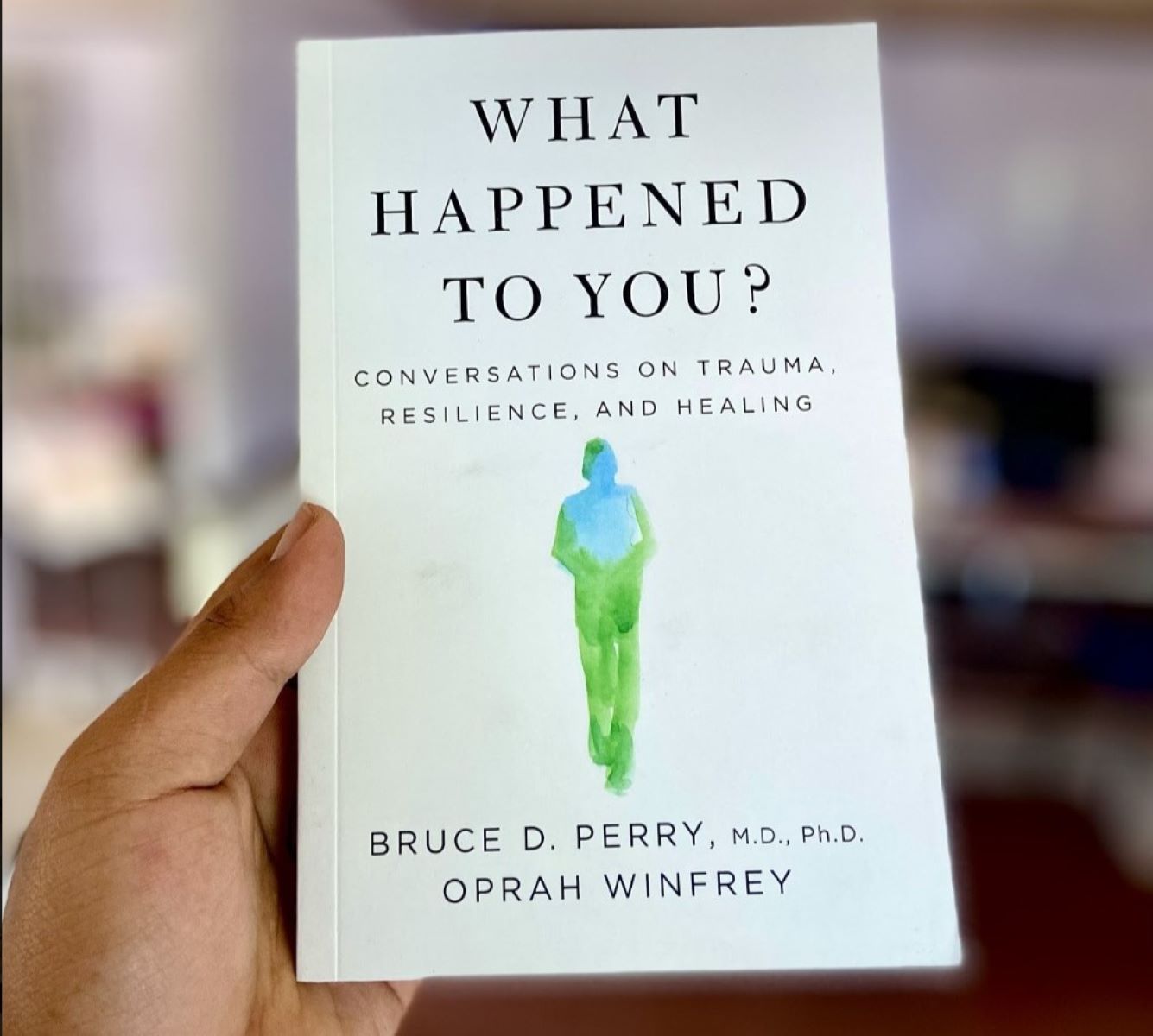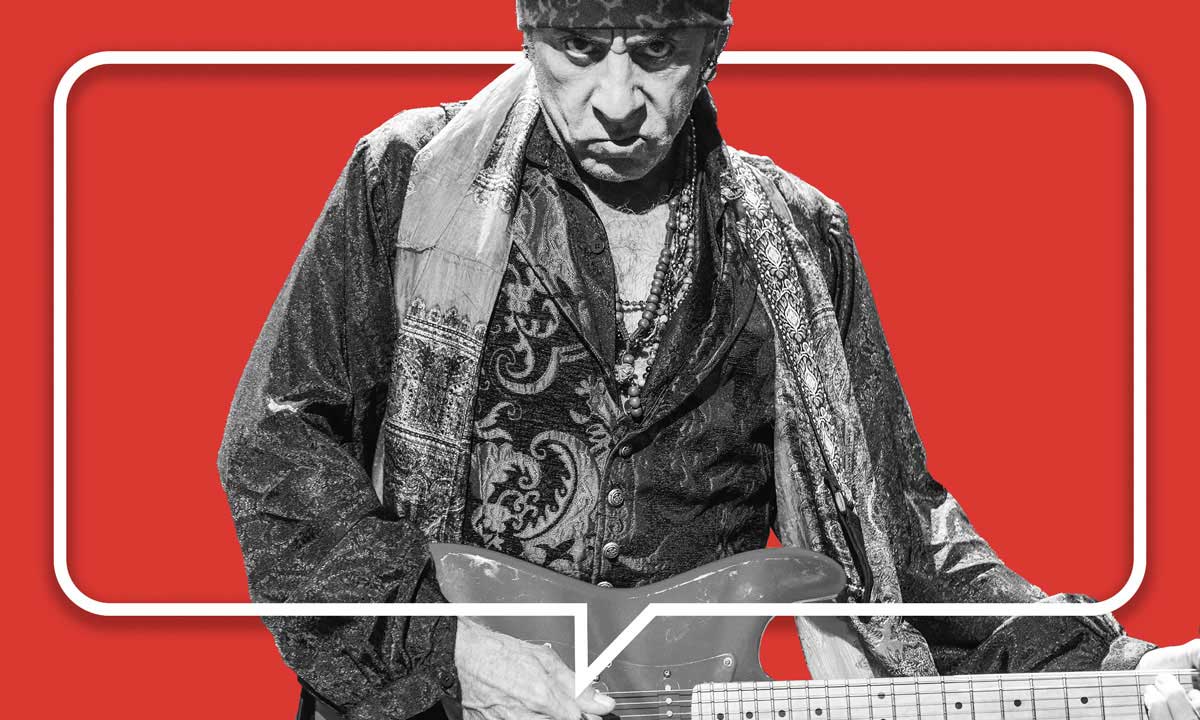Home>Events & Info>Festival>What Happened At Fyre Festival


Festival
What Happened At Fyre Festival
Published: November 7, 2023
Discover the shocking truth behind what really happened at the infamous Fyre Festival, a disastrous event that turned the dream of a luxury festival experience into a complete nightmare. Experience the ultimate festival disaster firsthand.
(Many of the links in this article redirect to a specific reviewed product. Your purchase of these products through affiliate links helps to generate commission for AudioLover.com, at no extra cost. Learn more)
Table of Contents
- Introduction
- The Vision and Promise of Fyre Festival
- The Hyped Pre-Festival Marketing
- Arrival at the “Luxury” Festival Grounds
- Chaos and Disorganization: The Reality of Fyre Festival
- Lack of Essential Services and Basic Necessities
- Transportation Nightmares and Stranded Attendees
- The Evacuation and Cancellation of Fyre Festival
- Media Backlash and Legal Consequences
- Lessons Learned from the Fyre Festival Disaster
- Conclusion
Introduction
The Fyre Festival was supposed to be the ultimate luxury music festival experience, promising an unparalleled combination of music, luxury accommodation, gourmet food, and exotic location. The brainchild of entrepreneur Billy McFarland and rapper Ja Rule, it quickly gained widespread attention and drew in influential social media influencers and celebrities alike.
With promises of extravagant villas, celebrity chef-prepared meals, picturesque beaches, and an exclusive lineup of musical acts, the Fyre Festival was marketed as a once-in-a-lifetime event that was set to take place on the pristine island of Great Exuma in the Bahamas.
The allure of the Fyre Festival was further amplified by its marketing campaign, which utilized a strategic combination of social media influencers, glossy promotional videos, and lavish lifestyle imagery to create an air of exclusivity and desirability around the event.
However, what was meant to be a luxurious festival experience quickly turned into a disastrous and chaotic situation. Attendees were met with subpar accommodation, inadequate infrastructure, lack of basic necessities, and overall chaos. The festival, which was scheduled to take place over two weekends in April and May 2017, was ultimately cancelled, leaving thousands of attendees stranded with no clear way of getting off the island.
The fallout from the Fyre Festival was monumental, with lawsuits, criminal charges, and a tarnished reputation for those involved. The festival became a cautionary tale about the dangers of over-promising and under-delivering, as well as the power of social media marketing and influencer culture.
This article will delve into the vision and promise of the Fyre Festival, the hyped pre-festival marketing, the reality of the chaotic and disorganized festival grounds, the lack of essential services and basic necessities, the transportation nightmares and stranded attendees, the evacuation and cancellation of the festival, the media backlash and legal consequences, and the lessons learned from this infamous festival disaster.
The Vision and Promise of Fyre Festival
At its inception, the Fyre Festival aimed to be the epitome of luxury and exclusivity. Co-founders Billy McFarland and Ja Rule envisioned a festival that would elevate the traditional concert experience to new heights. They promised an extravagant event that would blend music, art, and opulence in a breathtaking island setting.
The vision behind Fyre Festival was to create a high-end event that would cater to the elite, offering them a once-in-a-lifetime experience unlike any other. McFarland and Ja Rule sought to create a festival where attendees would feel like royalty, indulging in unparalleled luxury and enjoying performances from top-tier musical acts.
The promotional materials for the festival depicted picturesque beaches, luxurious accommodations, gourmet dining experiences, and a star-studded artist lineup. Influential social media personalities, such as Kendall Jenner, Bella Hadid, and Emily Ratajkowski, were enlisted to create buzz by sharing posts and videos about the festival on their platforms.
Attendees were lured in by promises of staying in extravagant villas and beachfront luxury tents, relishing gourmet meals prepared by renowned chefs, and partying on stunning private islands. The allure of rubbing shoulders with celebrities and influencers in a tropical paradise proved irresistible to many.
The Fyre Festival marketing campaign was a masterclass in creating an air of exclusivity and desirability. The organizers tapped into the power of social media, using attractive visuals, carefully curated posts, and strategic influencer endorsements to create a sense of FOMO (fear of missing out) among their target audience.
The festival was marketed not just as a music event, but as a lifestyle experience. It promised to transport attendees into a world of luxury and indulgence, with every detail meticulously planned and executed. The anticipation for the festival reached a fever pitch, with tickets selling out quickly and demand skyrocketing.
However, the grand vision and promises of the Fyre Festival would soon come crashing down, as the reality of the situation proved to be a far cry from what was advertised. The next section will delve into the hyped pre-festival marketing that set the stage for the infamous disaster that was about to unfold.
The Hyped Pre-Festival Marketing
The pre-festival marketing for Fyre Festival was nothing short of spectacular. The organizers employed a multi-faceted approach to create a sense of exclusivity, luxury, and desirability among potential attendees.
One of the key strategies used was leveraging the power of social media influencers. Fyre Festival enlisted the help of some of the most influential personalities of the time, including supermodels Kendall Jenner, Bella Hadid, and Emily Ratajkowski, to promote the event on their social media platforms.
These influencers shared enticing posts showcasing the beautiful island location, the luxurious accommodations, and the star-studded artist lineup. Their endorsement created a buzz and generated massive interest among their millions of followers, creating an air of exclusivity around the event.
In addition to influencers, Fyre Festival also released captivating promotional videos and images that captured the imagination of potential attendees. The videos showcased breathtaking aerial views of the island, lavish villas, and stunning beachfront settings. They portrayed Fyre Festival as the ultimate luxury getaway that promised an unmatched experience.
The festival’s website was designed to evoke a sense of prestige and allure. It highlighted the luxurious amenities, artist lineup, and the promise of an unforgettable experience. The website featured visually appealing images, vibrant descriptions, and persuasive language to entice visitors to purchase tickets.
To create even more hype, Fyre Festival organized a series of promotional events leading up to the main festival. These events, held in glamorous locations like New York City and the Caribbean, showcased the festival’s vision in real life. Attendees were treated to exclusive performances, gourmet food, and lavish settings, aiming to create a taste of what they could expect at the actual festival.
The marketing campaign succeeded in generating significant interest and ticket sales. Fyre Festival became the talk of the town, capturing the attention of not just music enthusiasts but also high-net-worth individuals seeking unique experiences.
However, the hype and glamour surrounding the pre-festival marketing would prove to be a façade, as what awaited attendees on the island was a far cry from the extravagant promises made in the promotional materials. The next section will delve into the grim reality that unfolded at the festival grounds.
Arrival at the “Luxury” Festival Grounds
As attendees arrived on the island of Great Exuma, the stark contrast between the promised luxury and the actual festival grounds quickly became apparent. What was supposed to be a dreamy paradise turned into a nightmare of disorganization and chaos.
Attendees expecting to be greeted by luxurious accommodations found themselves faced with subpar conditions. The highly anticipated “villas” turned out to be nothing more than basic tents with no electricity or running water. These makeshift accommodations were far from the glamorous, fully furnished villas promised in the promotional materials.
Infrastructure was severely lacking, with the festival site lacking basic amenities such as proper restroom facilities and waste management systems. The reality of the situation was far from the opulent experience attendees had envisioned.
In addition to the lack of infrastructure, the festival grounds were in a state of disarray. Construction materials were scattered throughout the site, and unfinished stages and structures further added to the chaotic atmosphere.
As the festival got underway, it became evident that the organization and planning were far from adequate. The promised gourmet meals prepared by celebrity chefs were replaced with meager cheese sandwiches served in styrofoam containers. The luxury dining experience attendees had anticipated was reduced to bare minimum sustenance.
The lack of organization extended to the festival’s schedule and lineup as well. Many of the slated musical performances faced delays, and some acts were unable to perform at all due to logistical issues. Attendees were left with a sense of frustration and disappointment as they were unable to experience the performances they had eagerly anticipated.
Communication with festival staff was also a challenge, with organizers seemingly unable to effectively address the mounting concerns and complaints. Attendees were left feeling stranded and ignored, worsening the already deteriorating situation.
What was meant to be a luxurious and carefully planned festival experience had turned into a chaotic and unfulfilling ordeal for those in attendance. As frustration and anger mounted, it became clear that the Fyre Festival was spiraling out of control, resulting in a disastrous event that the world would soon witness.
Chaos and Disorganization: The Reality of Fyre Festival
The Fyre Festival, which was advertised as a luxurious and exclusive experience, was plagued by chaos and disorganization from the moment attendees set foot on the island. The stark reality of the festival was a far cry from the glamorous promises made in the marketing campaign.
One of the first signs of trouble was the lack of coordination and preparation on the festival grounds. The organizers were ill-equipped to handle the logistical challenges of hosting such a large-scale event. Basic infrastructure, such as plumbing and electricity, was insufficient or nonexistent, leaving festival-goers to navigate through dire conditions.
Accommodations, which were supposed to be luxurious villas and beachfront tents, turned out to be flimsy structures with inadequate amenities. Many attendees were shocked to find damp mattresses, no air conditioning, and even exposed wiring in their assigned tents. The reality of the accommodations was a far cry from the lavish living spaces advertised.
Attendees arrived to find a lack of basic necessities such as food, water, and medical services. The promised gourmet meals turned into meager servings of prepackaged sandwiches, while drinking water was in short supply. Medical assistance was virtually nonexistent, leaving many attendees vulnerable and without access to necessary healthcare services.
The disorganization extended to the festival’s lineup and performances as well. Schedules were poorly communicated, resulting in long delays and last-minute changes. Some scheduled acts did not even make it to the festival grounds, leaving attendees disappointed and frustrated.
Transportation was also a major challenge, with insufficient resources to transport attendees to and from the festival grounds. Many were stranded at the airport or left waiting for hours in the scorching heat, unable to reach the festival site. The lack of transportation arrangements only added to the growing sense of chaos and frustration.
With each passing day, the situation deteriorated further. Attendees encountered malfunctioning equipment, unruly crowds, and a complete breakdown in communication with festival staff. The promised luxury experience had unraveled into a nightmare of confusion and disappointment.
The reality of the Fyre Festival was exposed when attendees took to social media to document and share their experiences. The festival, which had been hyped as a glamorous and elite event, quickly became an international spectacle of failure and mismanagement.
Ultimately, the chaos and disorganization of Fyre Festival would lead to its untimely demise. The festival’s catastrophic failure would go down in history as one of the most notorious event planning disasters, serving as a cautionary tale for future organizers and a wake-up call for attendees to be cautious of extravagant promises.
Lack of Essential Services and Basic Necessities
One of the most glaring issues at Fyre Festival was the severe lack of essential services and basic necessities. Attendees, who were promised a luxurious and indulgent experience, found themselves in a dire situation where their basic needs were not adequately met.
One of the most critical areas lacking in provision was the availability of food and water. The promised gourmet meals prepared by celebrity chefs turned out to be nothing more than cheese sandwiches in styrofoam containers. These meager rations were a far cry from the lavish dining experience that had been advertised. Drinking water was also in short supply, leaving attendees parched and desperate for hydration.
The inadequacy of healthcare services was another major concern. The festival’s medical facilities were essentially nonexistent, leaving attendees without access to basic medical care. With the oppressive heat, large crowds, and unhygienic conditions, it was a recipe for disaster. Those who needed medical attention or assistance were left to fend for themselves, exacerbating the already dire situation.
Sanitation and hygiene were also major issues. The lack of proper restroom facilities and waste management systems resulted in unsanitary conditions. Attendees were forced to use portable toilets that quickly became overwhelmed and unsanitary. The lack of proper waste disposal further compounded the problem, leading to a buildup of garbage and creating an unpleasant environment.
Another essential service that was woefully lacking was proper accommodation. The luxury villas that had been advertised turned out to be basic tents with no electricity or running water. These makeshift accommodations were not suitable for the conditions, leaving attendees exposed to the elements without a comfortable place to rest and recharge.
The lack of basic necessities and essential services created a sense of desperation and frustration among attendees. Many took to social media to document and share their experiences, highlighting the dire conditions they were forced to endure.
The absence of these essential services and basic necessities not only compromised the comfort and well-being of attendees but also posed potential health risks. The failure to provide adequate food, water, sanitation, and medical care demonstrated a blatant disregard for the safety and welfare of those in attendance.
In the aftermath of the festival, these deficiencies would become a focal point of the public backlash and legal repercussions faced by the organizers. The lack of essential services and basic necessities at Fyre Festival served as a stark reminder of the importance of proper planning and consideration of attendees’ welfare in any event or festival organization.
Transportation Nightmares and Stranded Attendees
Transportation was a major source of frustration and chaos at Fyre Festival, as attendees were faced with a series of transportation nightmares that left many stranded and unable to reach the festival grounds.
One of the main issues was the lack of coordination and planning for transportation logistics. As attendees arrived at the airport, they were met with a lack of transportation options to take them to the festival site. The organizers had failed to arrange sufficient shuttle services or transportation vehicles to accommodate the influx of festival-goers.
Those lucky enough to secure transportation faced a whole new set of problems. The transportation provided was unorganized and inadequate, resulting in long delays and overcrowded vehicles. Attendees reported being crammed into buses or vans, often without proper ventilation or comfortable seating, as they made their way to the festival grounds.
Some attendees had to rely on private transportation options, such as taxis or local drivers, to get to the festival. However, even these alternative options were limited, leading to increased frustration and uncertainty.
Once on the island, transportation within the festival grounds was also a major issue. The lack of proper signage and guidance resulted in attendees struggling to navigate their way around the sprawling festival site. Compounded with the already chaotic and disorganized atmosphere, getting from one stage to another or finding basic amenities proved to be a logistical nightmare.
As the festival descended into further chaos, transportation became even more scarce. With the event facing mounting issues and an increasing number of attendees demanding to leave, transportation services became overwhelmed and unable to cope with the demand. This resulted in long waits and ultimately left many stranded on the island with no clear means of getting back home.
The stranded attendees faced significant hardships. Many were left without access to proper accommodations, food, and water. The lack of communication and assistance from festival staff only added to the sense of despair and helplessness.
Attendees took to social media to share their stories of being stranded, using hashtags like #FyreFraud and #StrandedFest. These posts gained significant attention, further exposing the disastrous situation unfolding at the festival.
The transportation nightmares and stranded attendees were a clear indication of the lack of preparation and foresight by the organizers. The failure to arrange adequate transportation services not only resulted in inconvenience and frustration but also jeopardized the safety and well-being of those in attendance.
The transportation failures at Fyre Festival serve as a lesson in the importance of meticulous planning and organization, especially when it comes to transportation logistics for large-scale events. It highlights the need for event organizers to have contingency plans in place to handle unforeseen circumstances and to prioritize the safety and comfort of attendees.
The Evacuation and Cancellation of Fyre Festival
Amid the escalating chaos and deteriorating conditions at Fyre Festival, the inevitable decision to evacuate and ultimately cancel the event was made, resulting in a wave of confusion and disappointment for the attendees.
The decision to evacuate came as a direct result of the numerous challenges and failures that had plagued the festival since its inception. With inadequate infrastructure, lack of essential services, and a growing sense of discontent among attendees, it became clear that the festival was beyond redemption.
Faced with mounting criticism, safety concerns, and logistical nightmares, the organizers decided to initiate the evacuation process. However, the evacuation itself was marred by further disorganization and lack of communication.
Attendees, already stranded and frustrated, were left scrambling to find information on how and when they would be leaving the island. The lack of coordination and clear instructions from the festival staff only added to the confusion and anxiety.
Some attendees managed to find alternative transportation options to leave the island, while others were left stranded without any means of getting off. The disarray and uncertainty surrounding the evacuation process further deepened the feeling of betrayal and disappointment among those in attendance.
As news of the festival’s cancellation spread, the ramifications were felt far beyond the confines of the festival grounds. The reputation of the organizers, Billy McFarland and Ja Rule, took a severe hit as they were now held accountable for the disastrous event. Lawsuits were filed by disgruntled attendees, seeking compensation for the expenses incurred and the false promises made.
The cancellation of Fyre Festival not only had a financial impact on the organizers but also served as a vivid example of the consequences of failing to deliver on grand promises and neglecting the well-being of attendees. It proved to be a cautionary tale for the event planning industry, highlighting the importance of transparency, preparation, and integrity.
In the aftermath of the cancellation, the festival’s failure became a media sensation. Documentaries, such as “Fyre: The Greatest Party That Never Happened” and “FYRE FRAUD,” were released, shedding further light on the behind-the-scenes chaos and manipulation that contributed to the festival’s downfall.
The evacuation and subsequent cancellation of Fyre Festival marked the end of a disastrous and ill-conceived event. It served as a wake-up call for both organizers and attendees alike to be vigilant and to prioritize meticulous planning, transparency, and ethical practices in the world of event management.
Media Backlash and Legal Consequences
The fallout from the Fyre Festival disaster extended beyond the stranded attendees and reached a global scale as the media backlash intensified and legal consequences began to unfold.
The festival’s failure became a media sensation, captivating headlines worldwide. News outlets, social media platforms, and documentary filmmakers seized the opportunity to shed light on the grand deception and widespread mismanagement that characterized Fyre Festival.
Documentaries like “Fyre: The Greatest Party That Never Happened” and “FYRE FRAUD” delved into the behind-the-scenes chaos, giving viewers an inside look into the disastrous planning and deceptive marketing tactics employed by the organizers. These documentaries amplified the negative publicity and exposed the true extent of the festival’s failure to a global audience.
The media backlash was swift and severe. Influencers who had played a role in promoting the festival faced public scrutiny and backlash for their involvement, leading some to issue apologies and distance themselves from the event.
Legal consequences soon followed, as attendees and business partners pursued legal actions against the festival’s organizers. Numerous lawsuits were filed, alleging fraud, breach of contract, and negligence, among other claims.
Billy McFarland, the co-founder of Fyre Festival, was indicted and later pleaded guilty to multiple counts of fraud. He was ultimately sentenced to six years in prison and ordered to pay restitution to those affected by the festival’s failure.
Ja Rule, the other co-founder, faced a significant blow to his reputation and career as a result of the festival’s debacle. While he was not charged criminally, he faced backlash and criticism for his involvement in the event and the subsequent fallout.
The legal consequences stretched beyond McFarland and Ja Rule, with several other individuals associated with the festival facing legal scrutiny. The unraveling of Fyre Festival served as a stark reminder of the financial, legal, and reputational risks associated with negligent event planning and fraudulent practices.
The media backlash and legal consequences resulting from Fyre Festival were a testament to the power of social media in exposing deception and holding those responsible accountable. The disastrous event became a cautionary tale for both the event management industry and the public, emphasizing the importance of due diligence, transparency, and ethical practices in organizing and promoting events.
Lessons Learned from the Fyre Festival Disaster
The Fyre Festival disaster serves as a stark reminder of the importance of careful planning, transparency, and ethical practices in the event management industry. This catastrophic event offers several valuable lessons that can guide future organizers and attendees:
1. Honesty and Transparency: One of the most significant lessons from the Fyre Festival is the importance of being honest and transparent in event promotion. Overpromising and underdelivering can have severe consequences for both organizers and attendees.
2. Due Diligence: Organizers must conduct thorough research and due diligence when selecting vendors, partners, and suppliers. The lack of proper vetting and oversight led to numerous failures at Fyre Festival, emphasizing the importance of effective supplier management.
3. Adequate Planning and Preparation: Fyre Festival was marred by a lack of proper planning and preparation. Future event organizers must allocate sufficient time and resources to plan and execute all aspects of an event, from infrastructure to amenities, to ensure a smooth experience for attendees.
4. Contingency Plans: Unforeseen circumstances can arise during any event. Having well-thought-out contingency plans in place can help organizers mitigate emergencies, address logistical challenges, and better respond to unexpected situations.
5. Communication and Customer Service: Clear and timely communication is vital when issues arise. Attendees need to be informed promptly and provided with accurate information. Additionally, responsive customer service is crucial in maintaining the trust and satisfaction of attendees.
6. Prioritize Attendee Safety and Well-being: The welfare of attendees should always be the top priority. Proper amenities, medical services, and essential necessities should be readily available to ensure the safety and comfort of all participants.
7. Social Media Influence: The power of social media influencers and their impact on marketing cannot be underestimated. However, organizers and attendees should exercise caution and critically evaluate claims and endorsements made on social media platforms.
8. Reputation and Trust: The handling of a crisis situation can significantly impact an organization’s reputation and trustworthiness. Responding transparently, taking responsibility, and addressing concerns can help rebuild trust with attendees and stakeholders.
9. Legal Compliance: Adhering to legal and ethical standards is essential for event organizers. Understanding and complying with relevant laws and regulations can help prevent legal consequences and protect attendees’ rights.
10. Continuous Learning and Improvement: The Fyre Festival disaster serves as an opportunity for the event management industry and individuals to reflect, learn, and improve. By incorporating the lessons learned from this event, organizers can work towards creating safe, enjoyable, and successful events in the future.
Ultimately, the Fyre Festival disaster stands as a cautionary tale, reminding both organizers and attendees of the critical importance of transparency, thorough planning, and ethical practices in the realm of event management.
Conclusion
The Fyre Festival will forever be remembered as one of the most disastrous events in recent history. What was promised as a luxurious and exclusive festival turned into a chaotic nightmare, leaving attendees stranded and disillusioned. The lessons learned from this infamous event have greatly impacted the event management industry and can guide future organizers and attendees.
The vision and promise of Fyre Festival were captivating, highlighting the power of effective marketing and social media influence. However, the hype and glamour overshadowed the lack of proper planning, transparency, and ethical practices. The festival’s failure exposed the consequences of overpromising and underdelivering, demonstrating the importance of honesty and transparency in event promotion.
The Fyre Festival disaster also emphasized the significance of due diligence, careful planning, and adequate preparation. From vendor selection to infrastructure management, thorough research and effective logistics are crucial for successful events. Additionally, having contingency plans and clear communication channels is essential to navigate unforeseen circumstances and ensure the safety and well-being of attendees.
The media backlash and legal consequences that followed further highlighted the need for ethical practices, customer service, and proper management. Organizers must prioritize attendee satisfaction, prioritize their safety, and comply with legal standards to avoid reputational damage and legal repercussions.
As the event management industry moves forward, the lessons learned from Fyre Festival should serve as a reminder to continuously learn and improve. Transparent communication, meticulous planning, ethical practices, and a focus on attendee satisfaction should be the pillars upon which events are built.
Ultimately, the Fyre Festival disaster serves as a cautionary tale for both event organizers and attendees. It demonstrates the importance of integrity, preparation, and the responsible use of social media in creating successful and memorable events. By incorporating these lessons, the industry can strive to rebuild trust and deliver exceptional experiences that meet and exceed attendees’ expectations.











